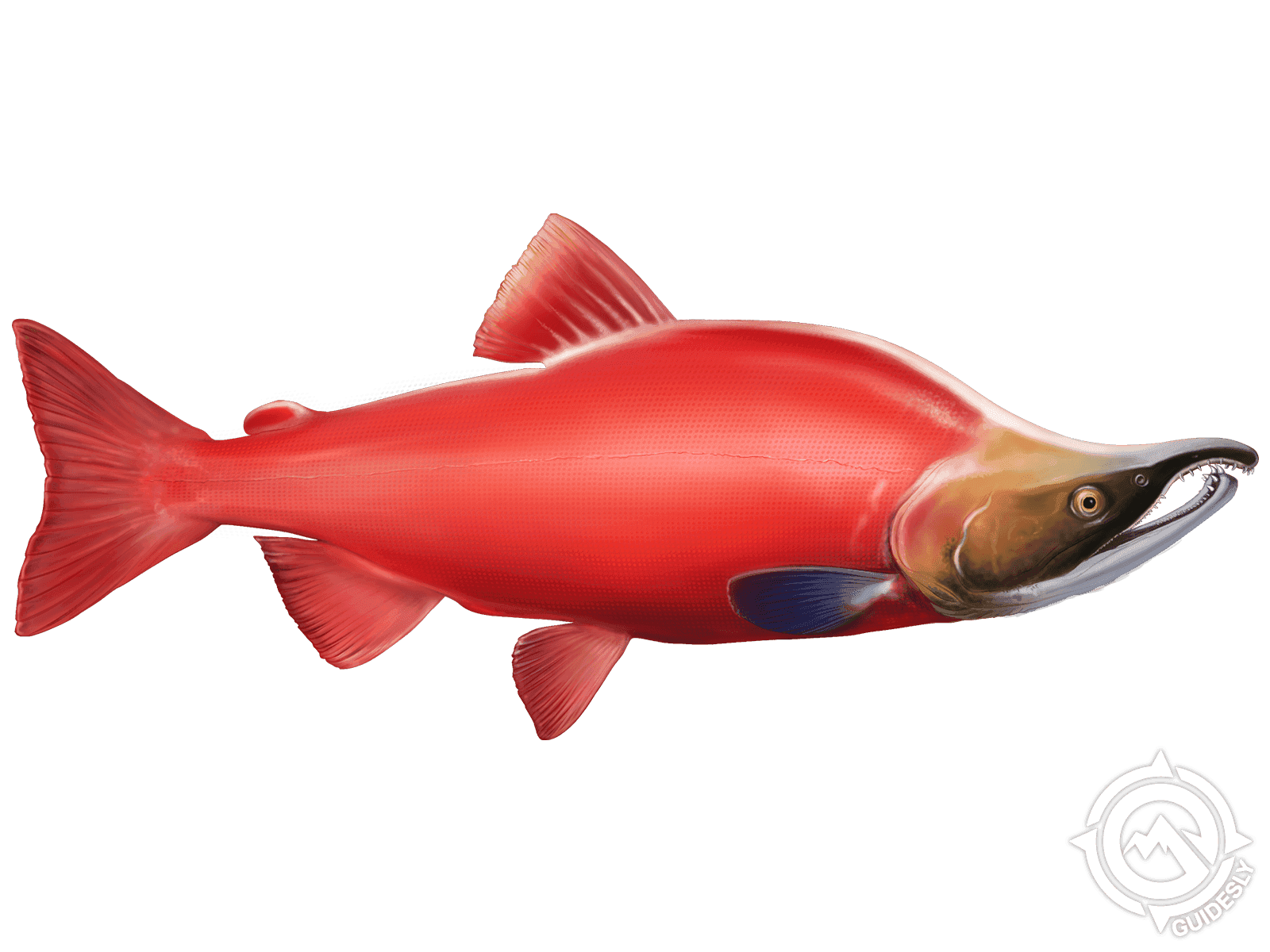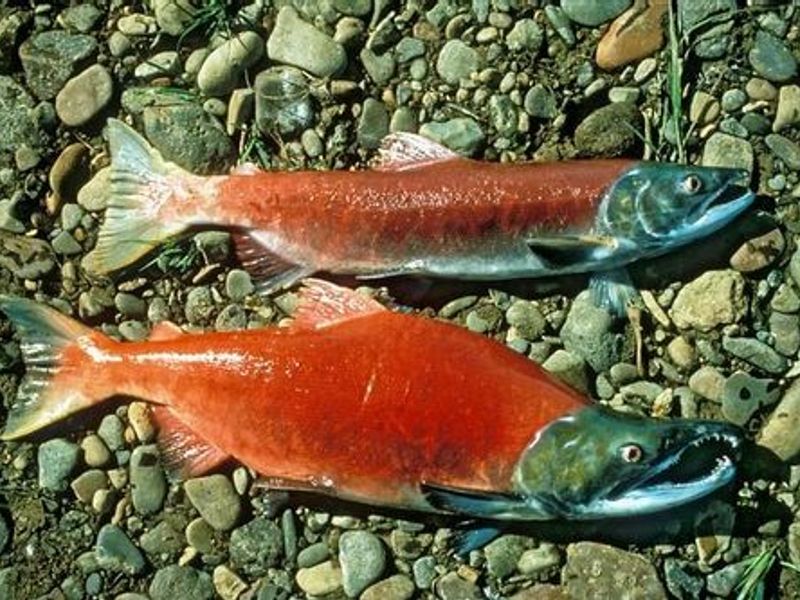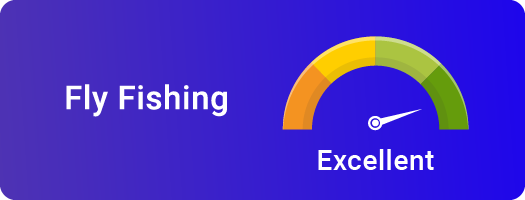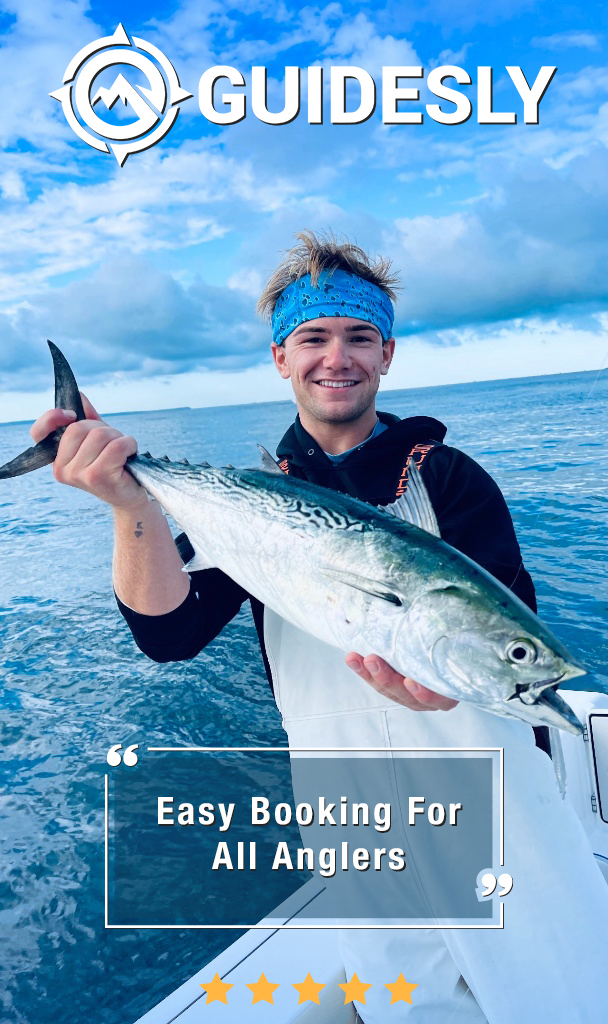Sockeye Salmon

Species Details
Oncorhynchus Nerka
Salmonidae
Salmoniformes
Inshore, Lake, River
4 - 15 lbs.
18" - 32"
Sockeye Salmon (Oncorhynchus Nerka) Description

Sockeye Salmon (Salmonidae family) is a small fish compared to other species in the salmon family. Wild sockeye salmon have a metallic blue-green back, silver sides, and a white belly. Unlike other pacific salmon, it lacks distinct black spots, but few specks can be found on the back only. There are none on their fins and tail. When they return to the freshwater spawning grounds, the sockeye's head turns green, and their body turns red.
Size and Weight
The average Sockeye Salmon is 18 to 32 inches and weighs 4 to 15 pounds.
Habitat and Distributions

The Sockeye Salmon are born in rivers and streams that are tributaries of the Pacific, then as adults, travel to the Pacific Ocean. They return to the rivers during spawning season. Due to the degradation of its habitat and overfishing, studies show that this salmon species' population is in decline.
The Northern Pacific Ocean and its tributaries are native points of these wild salmon. They range from Bristol Bay, Alaska, to the infamous Copper River. They are found in many areas of British Columbia and as far south as the Sacramento River, California. They can travel inwards up to 900 miles.
Interesting Facts
Sockeye Salmon are also called red salmon and blueback salmon.
They are anadromous in nature, which means they travel from freshwater to seawater and then later return to their hatching point to spawn. They can identify their home stream using their smell and will travel incredible distances to return for spawning.
All salmon species have a unique spawning process where they watch the nest, dying shortly after spawning.
The landlocked sockeye are called kokanee and are not anadromous.
Wild salmon is a well-known delicacy, fetching top dollar. A salmon fillet with orange or pink meat has high nutritional value.
Diet
Juvenile Sockeye feed on zooplankton, amphipods, and insects. Once they reach the ocean, the adult sockeye diet comprises small adult fishes, larvae, and sometimes squid.
Fishing Techniques - How to Catch Sockeye Salmon
Salmon fishing is one of the most exciting experiences for the fly fisherman. Alaska and British Columbia are renowned for their Sockeye Salmon runs.
The best time for fishing sockeye is May through September. At this time, the fish swim upriver and close to the bottom. With their mouths opening and closing, the trick is to find the right lure for the water level and place it where the leader is at mouth level. Large flies are for high water and smaller ones are best for low water. When the water temperature is over 60 degrees, salmon have a greater desire to go after a dry fly. When fishing in the fall, the most successful flies are traditionally larger and very colorful. If you are unsure about what size fly you should be using, your best bet is to start with a #6 wet fly. A 7-9 weight 9-foot fly rod is good to catch a feisty red salmon.
Anglers who are bait-casting should use spinning rods in the 8 - 20 pound range. Sand shrimp and salmon roe are popular live baits. Small spoons, spinners, small flies, and streamers are good lures.
Is Sockeye Salmon Good to Eat?
Sockeye salmon is a delicious and nutritious fish that is renowned for its rich flavor and beautiful red color. Its rich flavor and texture make it a versatile ingredient that can be cooked in a variety of ways, from grilling to poaching. Compared to other salmon like the popular Chinook Salmon, Sockeye is an oilier fish with deep red flesh. It has a stronger flavor and a sturdy flesh which makes it stand up to grilling.
This delicious fish is not only packed full of flavor, but it's also loaded with a wide range of health benefits. From improving heart health to reducing inflammation, Sockeye salmon is one of the best foods you can eat when it comes to your overall well-being. The wild-caught variety, in particular, is abundant in essential vitamins, minerals and heart-healthy fats. With its bright red flesh, sockeye salmon is not only a feast for the eyes, but it is also packed with omega-3 fatty acids, which help to lower the risk of heart disease. Additionally, it contains vitamins B12 and D, both of which are vital for optimal brain and immune system function. Sockeye salmon is also rich in potassium, which is crucial for healthy muscle function, and selenium, an important mineral that helps to support the body's antioxidant defense system. Eating wild-caught sockeye salmon is not only delicious but also an excellent way to nourish your body with essential nutrients.
World Record
The world record for sockeye salmon is 15 pounds 3 ounces and was caught on the Kenia River in Alaska by Stan Roach.







